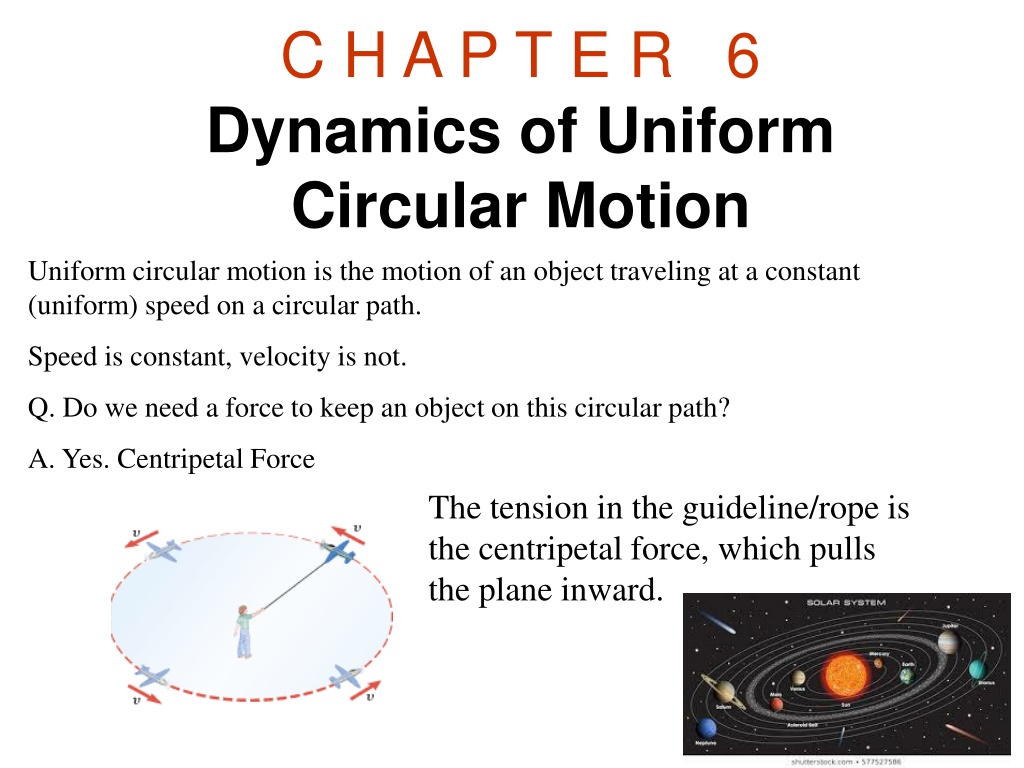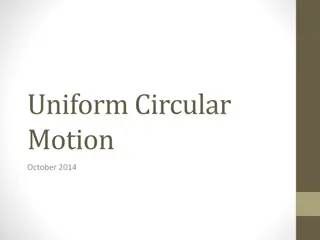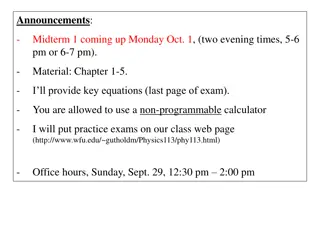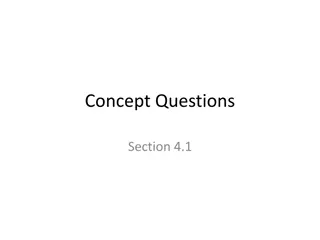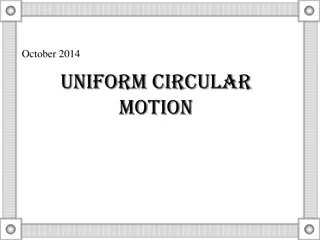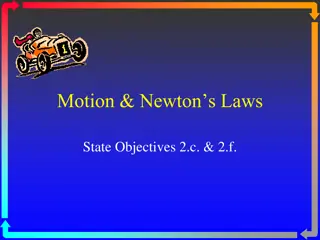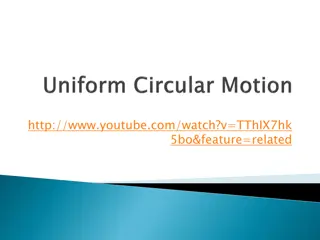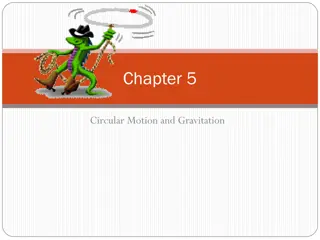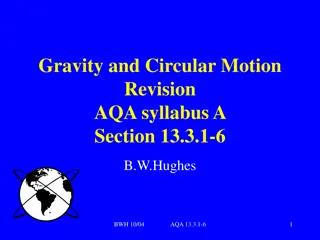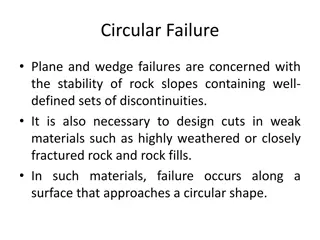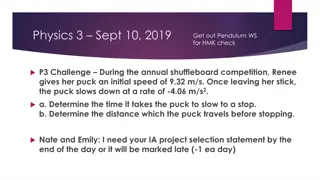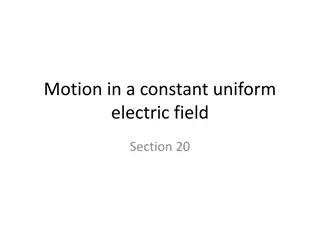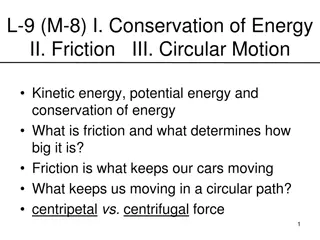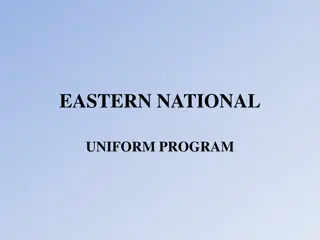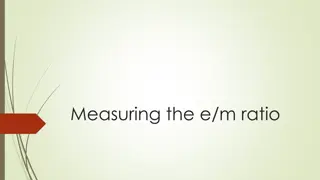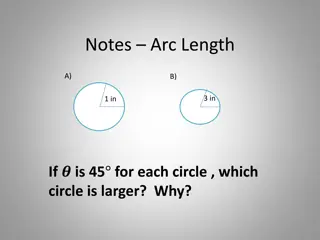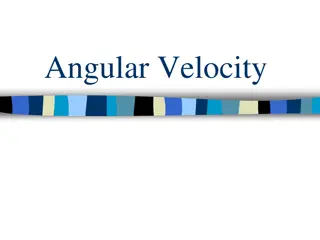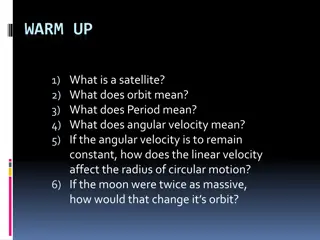Understanding Dynamics of Uniform Circular Motion
Exploring the concept of uniform circular motion, this content delves into the centripetal force required to keep an object moving at a constant speed along a circular path. It discusses the relationship between centripetal force, speed, radius, and mass in maintaining circular motion. Various examples, such as cars on curves and banked roads, illustrate the practical applications of centripetal force. Additionally, Newton's Law of Universal Gravitation and the Universal Gravitational Constant are introduced to provide a comprehensive understanding of forces in the universe.
Download Presentation

Please find below an Image/Link to download the presentation.
The content on the website is provided AS IS for your information and personal use only. It may not be sold, licensed, or shared on other websites without obtaining consent from the author. Download presentation by click this link. If you encounter any issues during the download, it is possible that the publisher has removed the file from their server.
E N D
Presentation Transcript
C H A P T E R 6 Dynamics of Uniform Circular Motion Uniform circular motion is the motion of an object traveling at a constant (uniform) speed on a circular path. Speed is constant, velocity is not. Q. Do we need a force to keep an object on this circular path? A. Yes. Centripetal Force The tension in the guideline/rope is the centripetal force, which pulls the plane inward.
Centripetal Force The centripetal force is the net force required to keep an object of mass m, moving at a speed v, on a circular path of radius r, and it has a magnitude of Direction: The centripetal force always points toward the center of the circle and continually changes direction as the object moves. Centripetal acceleration is:
Uniform Circular Motion Problem solving Receipe 1. Draw a free-body diagram. 2. Identify the unbalanced force, towards the center of the circle. 3. Set the unbalanced force equal to centripetal force.
Car on a Flat-Curve Question: What is the centripetal force for a car moving along a cul-de- sac? Answer: Static frictional force between the road and the tires.
Banked Curves Q: Why exit ramps in highways are banked? A: To increase the centripetal force for higher exit speed.
Question: Why do airplanes make banked turn? Answer: To generate the centripetal force required for the circular motion.
Newtons Law of Universal Gravitation Every body in the universe attracts every other body with a force that is directly proportional to the product of the masses of the bodies and inversely proportional to the square of the distance between the bodies.
Universal Gravitational Constant m m 11 = = 1 r 2 ; . 6 67 10 ( ). F G G SI 2 The proportionality constant, G is called the universal gravitational constant. Its value in the SI system of units is, G = 6.67 10-11N.m2/Kg2. The law of gravitation is universal and very fundamental. It can be used to understand the motions of planets and moons, determine the surface gravity of planets, and the orbital motion of artificial satellites around the Earth. Q: Force between 2 conversing people? A: Very small due to very small value of G, .10-11
Weight Weight = Mass x Gravity = W m g The weight of an object is the gravitational force that the planet exerts on the object. The weight always acts downward, toward the center of the planet. SI Unit of Weight: : newton (N)
Acceleration Due to Gravity Surface gravity for a planet can be calculated using the law of gravitation as follows: Consider a mass m at the surface of a planet of Mass, M and radius, R. Force of attraction between M and m is given by: (It can be assumed that the whole mass of Earth is located as a point mass at the center, r = R) ? =??? ?2 This is also the weight, since weight is the force of gravity. ?? =??? ?2 ? =?? Cancelling m both sides yields g: ?2
Satellites in Circular Orbits Speed of the satellite, v can be obtained as follows: ??2 ?=??? ?2=?? ?2 Cancelling m and r both sides gives: ? ?? ? ? = Determine the speed of the ISS, orbiting the Earth. http://www.isstracker.com/
As she orbits the earth, this NASA astronaut floats around in a state of apparent weightlessness.
Synchronous Satellites These satellites move around their orbits in a way that is synchronized with the rotation of the earth. A synchronous satellite orbits the earth once per day on a circular path that lies in the plane of the equator. Digital satellite system television uses such satellites as relay stations for TV signals.
